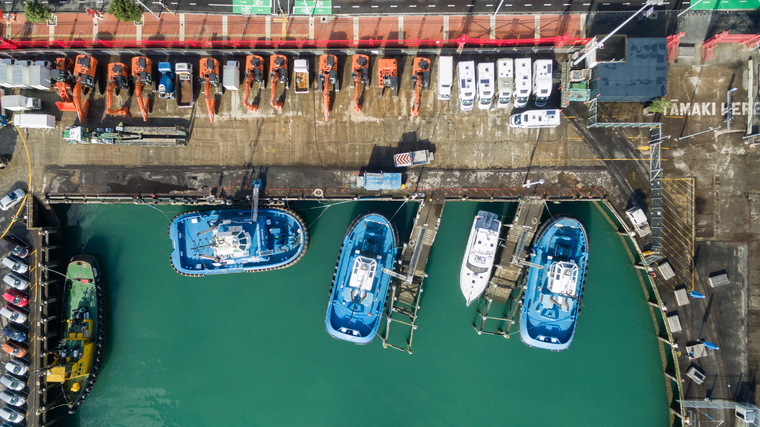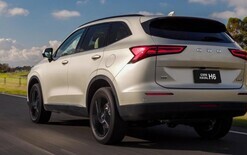POAL to get world-first electric tug

Ports of Auckland has signed a contract with Dutch company Damen Shipyards to buy the world’s first full-size, fully electric port tug.
The new tug, a Damen RSD-E Tug 2513 to be delivered in 2021, will have a 70-tonne bollard pull, the same as the port’s strongest diesel tug Hauraki, also built by Damen.
"In 2016 we set ourselves the goal of being zero-emission by 2040," says Tony Gibson, CEO of Ports of Auckland. "We set this goal because we recognise that urgent action is needed on climate change, and we wanted to be part of the solution. However, setting that goal created a tough challenge. We have a lot of heavy equipment, like tugs, and in 2016 there were no zero-emission options."
"When we first looked into buying an electric tug in 2016, there was nothing on the market," says Allan D’Souza, Ports of Auckland’s General Manager Marine, Engineering and General Wharf Operations. "We talked to several manufacturers about building a battery-powered tug. They told us we were dreaming. Hybrid tugs were possible, they said, but not battery. No way."
"Luckily for us," adds Gibson, "Allan doesn’t give up. He and marine technical superintendent Rob Willighagen kept talking to manufacturers, kept suggesting ways to solve problems, and they found a partner willing to take on the challenge: Damen Shipyards."
"I would like to acknowledge Damen for their work on this project since 2016. They have invested a significant amount of time and money to develop this innovative vessel. In the fight against climate change, partnerships are important, and Damen has been a great partner."
James Shaw, minister for climate change says, "People who say we have to wait for the technology to emerge before we can set ourselves bold goals have got it round the wrong way. Many of the challenges we face with climate change will require solutions that aren’t yet on the market."
"Ports of Auckland and an increasing number of other businesses across New Zealand are showing that won’t stop them finding ways to meet our goals on greenhouse gas emission reductions."
Over twenty years of diesel pollution saved
Auckland mayor Phil Goff says: "Commissioning the world’s first fully-electric large tug represents a strong commitment by Auckland and its port to reducing carbon emissions and achieving our carbon zero target.
"It’s great for the environment, reducing pollution in the city centre and cutting back carbon emissions.
"The life of the tug is around 25 years. By going electric now, we save 25 years of diesel pollution and a net reduction in costs of around $2.5 million because it is so much cheaper to operate."
"It was important to us that a new electric tug should be able to carry out normal port operations, just like our existing diesel tugs," Gibson adds. "Our new e-tug will be able to do three to four shipping moves on a full charge, or around three to four hours work (one shipping move takes an hour on average). A fast charge will take about two hours. This is just what we need."
"One of the other hurdles we had to get over was cost. The purchase price of this tug is significant, at roughly double that of a diesel tug, and that is an important consideration for a business that needs to make a profit. However, we are prepared to wear that up-front cost because our commitment to reduce emissions has to be more than just words.
"Fortunately, the cost of operating an electric tug is less than a third of the cost of running a diesel tug. So while we pay more upfront, over the life of the tug we’ll save around $12 million in operating costs, making our electric tug cheaper in the long term."





